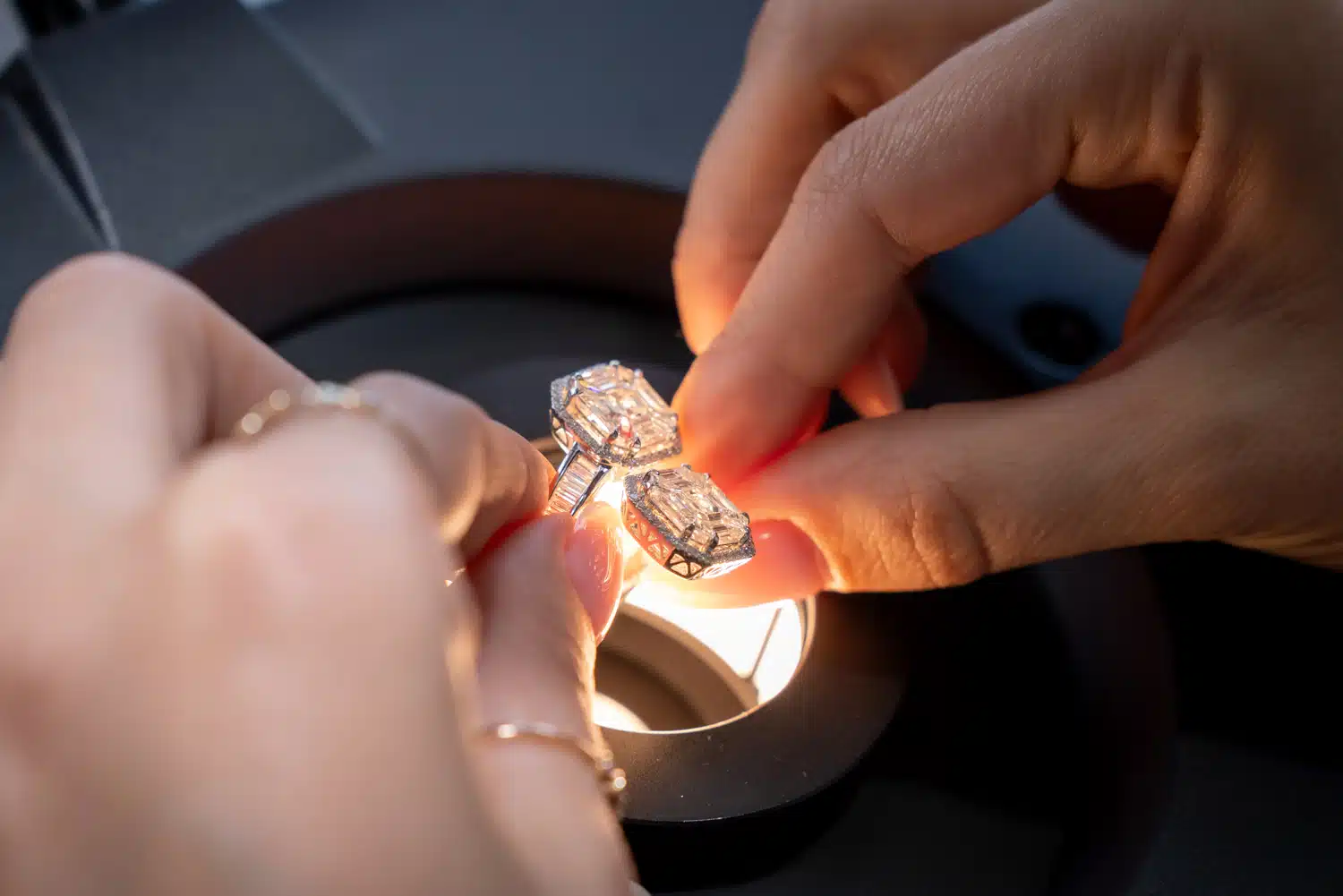In recent years, lab grown diamond necklaces have gained immense popularity among consumers seeking both elegance and ethical sourcing. These stunning pieces not only dazzle with their brilliance but also carry a story of sustainability and innovation. From understanding the technology behind lab grown diamonds to exploring their environmental benefits, here’s everything you need to know about these modern marvels.
Introduction to Lab Grown Diamond Necklaces
What are Lab Grown Diamonds?
Lab grown diamonds, also known as synthetic diamonds or man-made diamonds, are created in controlled laboratory environments rather than mined from the Earth. They possess the same chemical composition, crystal structure, and physical properties as natural diamonds.
Advantages of Choosing Lab Grown Diamond Necklaces
Ethical Sourcing and Conflict-Free Origins
One of the primary advantages of lab grown diamond necklaces is their ethical sourcing. Unlike natural diamonds, which can be associated with environmental degradation and human rights issues in mining regions, lab grown diamonds are produced sustainably. They are guaranteed conflict-free and do not contribute to harmful mining practices.
Environmental Sustainability
The production of lab grown diamonds consumes significantly less energy and resources compared to diamond mining. It reduces the carbon footprint and environmental impact associated with traditional diamond extraction. This aspect appeals to environmentally-conscious consumers who prioritize sustainability.
How Lab Grown Diamonds Are Created
High Pressure High Temperature (HPHT) Method
The HPHT method simulates the natural conditions under which diamonds form in the Earth’s mantle. It involves subjecting a diamond seed to high pressure and temperature to encourage crystal growth.
Chemical Vapor Deposition (CVD) Method
The CVD method involves creating diamonds by exposing carbon-rich gases to a substrate, where diamond crystals form layer by layer. This process allows for greater control over the diamond’s characteristics and is widely used for industrial and gem-quality diamonds.
Quality and Durability of Lab Grown Diamonds
Comparison with Natural Diamonds
Lab grown diamonds exhibit identical physical and optical properties as natural diamonds. They are graded using the same criteria of color, clarity, cut, and carat weight (the 4Cs) by reputable gemological institutes such as the Gemological Institute of America (GIA).
Certification Standards
Like natural diamonds, lab grown diamonds can also be certified for quality. Certifications from recognized laboratories provide assurance of the diamond’s authenticity and characteristics, helping consumers make informed purchasing decisions.
Design Options in Lab Grown Diamond Necklaces
Customization and Personalization
Lab grown diamond necklaces offer a wide range of design possibilities. They can be customized according to personal preferences, including different settings, shapes, and sizes. This flexibility appeals to consumers looking for unique and personalized jewelry pieces.
Popular Styles and Trends
From classic solitaire pendants to intricate halo designs, lab grown diamond necklaces reflect current fashion trends in the jewelry industry. Designers often incorporate man made diamonds into avant-garde and eco-friendly collections, catering to diverse tastes and preferences.
Pricing Considerations
Cost Comparison with Natural Diamonds
One of the significant advantages of lab grown diamond necklaces is their affordability compared to natural diamonds of similar quality. Prices for lab grown diamonds can be up to 30% lower, making them accessible to a broader range of consumers without compromising on beauty or durability.
Factors Influencing Price
Factors such as diamond size, quality (based on the 4Cs), and the complexity of the necklace design influence the price of lab grown diamond jewelry. Transparent pricing policies and competitive market dynamics contribute to the affordability of these pieces.
Maintenance and Care Tips
Cleaning and Storage Guidelines
To maintain the brilliance and beauty of lab grown diamond necklaces, regular cleaning is essential. Mild soap and water can be used to clean the jewelry, followed by gentle drying with a soft cloth. Proper storage in a jewelry box or pouch prevents scratches and maintains the necklace’s luster.
Longevity and Wearability
Lab grown diamonds are durable and suitable for everyday wear. Their hardness and resistance to scratching make them ideal for necklaces that are worn close to the skin. With proper care, lab grown diamond necklaces can last a lifetime and retain their sparkle.
Buying Guide for Lab Grown Diamond Necklaces
Choosing a Reputable Retailer
When purchasing lab grown diamond necklaces, it’s essential to buy from reputable retailers or jewelers who specialize in ethically sourced diamonds. Look for certifications and customer reviews that attest to the retailer’s credibility and commitment to quality.
Understanding Product Specifications
Before making a purchase, review the product specifications and certifications provided by the retailer. This information should include details on the diamond’s origin, quality grades, and any guarantees or warranties offered with the necklace.
Consumer Perception and Market Trends
Growing Popularity in the Jewelry Industry
Lab grown diamond necklaces are gaining traction in the global jewelry market, driven by increasing consumer awareness of ethical and sustainable practices. Jewelry brands and retailers are responding to this demand by expanding their offerings of lab grown diamond jewelry.
Consumer Preferences and Demographics
Millennial and Gen Z consumers, in particular, are showing a preference for lab grown diamond necklaces due to their ethical considerations and affordability. These generations value transparency in sourcing and seek products that align with their personal values.
Conclusion
In conclusion, lab grown diamond necklaces offer a compelling alternative to traditional mined diamonds, combining beauty with ethical sourcing and environmental responsibility. Whether you’re drawn to their eco-friendly credentials or their exquisite sparkle, these necklaces are a testament to the future of sustainable luxury in jewelry.


/product/90/3017032/2.jpg?7398)


